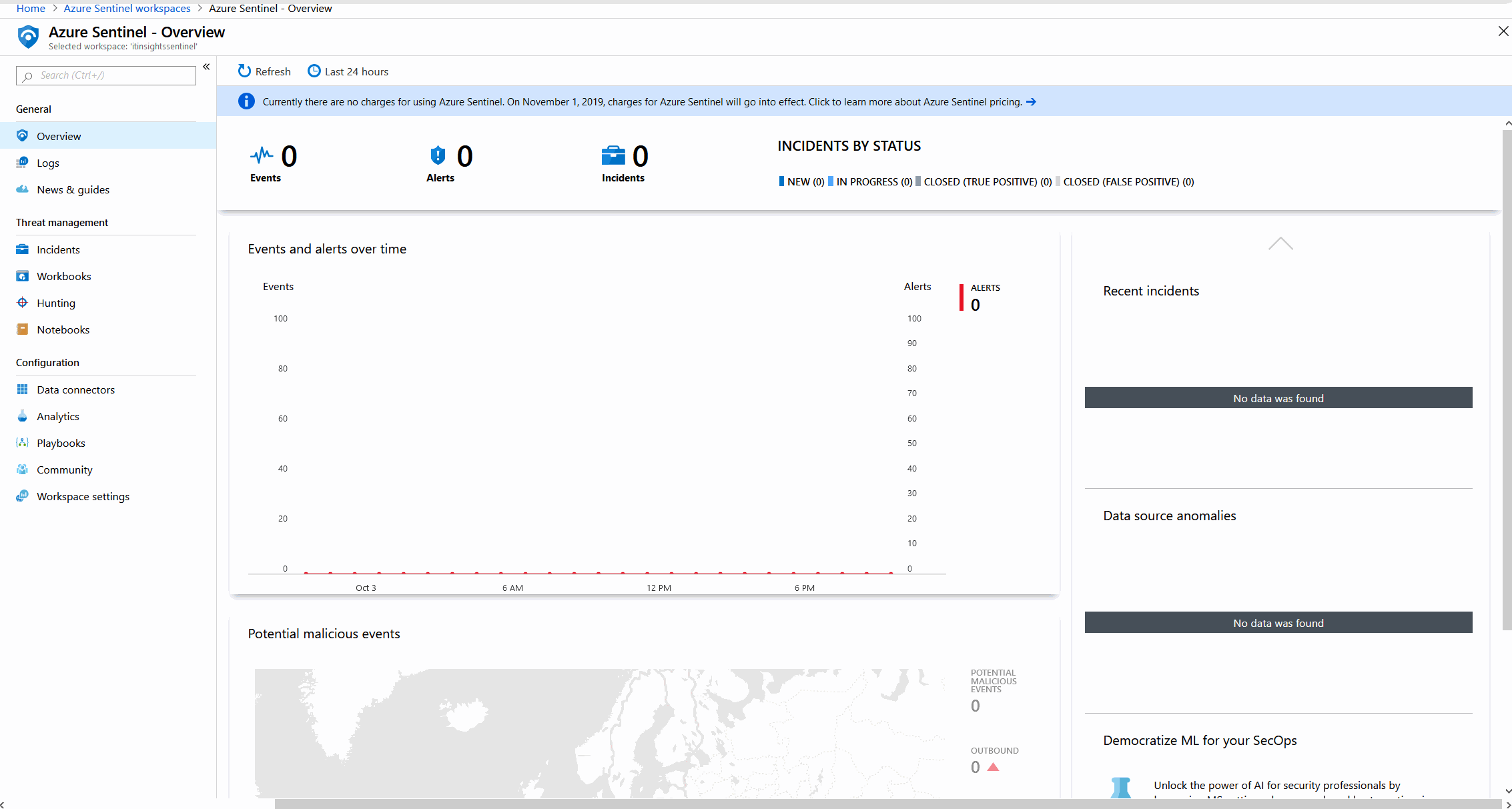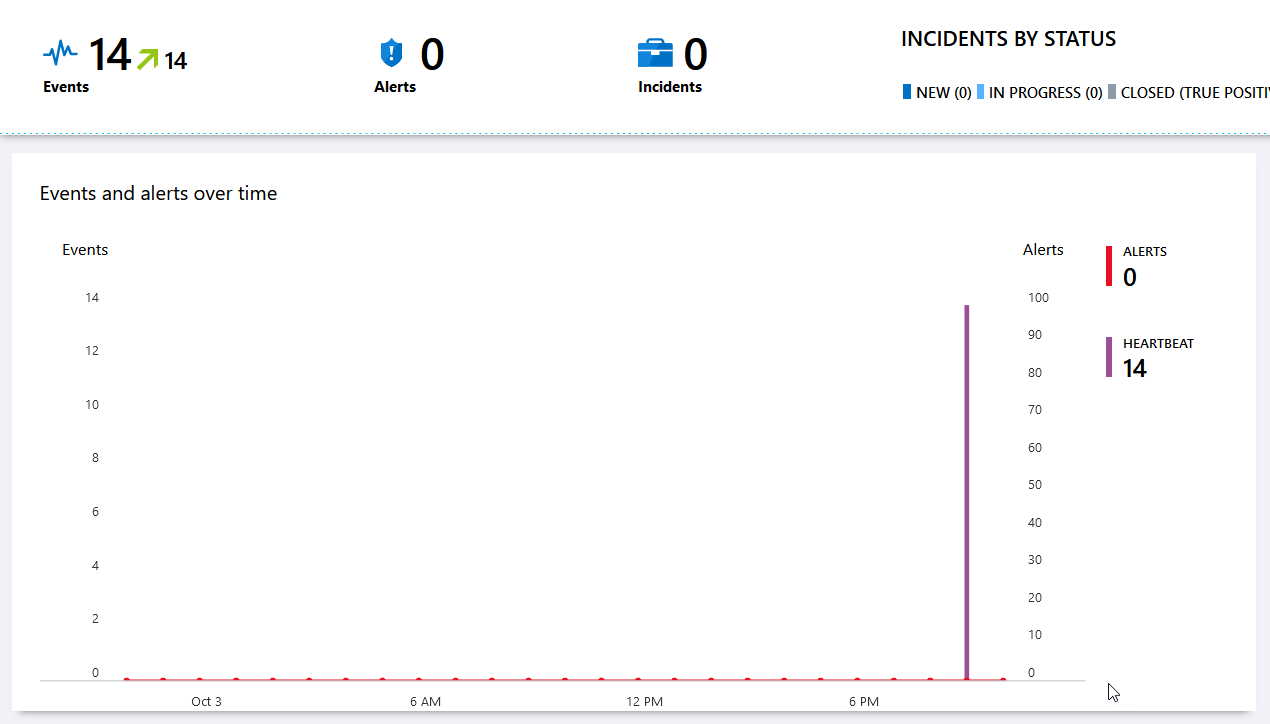Azure Sentinel Basic Configuration
This article will provide an introduction into the basics of Azure Sentinel. As we already covered the basics in our last post, we will now do some basic configuration tasks to get familiar with the Azure Sentinel interface.
This post is a part of our Azure Sentinel series. The following posts are also part of this series:
- Azure Sentinel Introduction
- Azure Sentinel Basic Configuration
- Azure Sentinel How to use sigma rules
- Azure Sentinel Threat Hunting (Coming soon)
Connectors
The first thing we will do is onboard a Azure Virtual Machine (VM), make some event adjustments and connect some basic Azure services to Azure Sentinel. As Azure Sentinel is basically a Log Analytics solution, we need to add a virtual machine in the Log Analytics panel. The following gif shows the VM onboarding process:

Now we should already see a few Heartbeat events in our Azure Sentinel dashboard:

EventLog vs. Security Events
The next thing we do is configuring the eventlog forwarding. This is a litle bit more complicated as the settings for eventlog forwarding are split into two places.
- Security Events: ASC/Azure Sentinel Connector
- Other Windows Events: Log Analytics Workspace settings
To configure Security Events directly from Azure Sentinel, click on the Sysmon
Azure Services
Finally we will connect some Azure services:
- Azure Activity
- Azure Security Center (ASC)
- Threat Intelligence Platforms
- CEF
Incidents
The incidents pane is the one you will probably use the most besides the hunting pane. The following picture shows an overview of the Incident 513 from cim2019 workspace tagging, comments, assignments manual automatic (Playbook)
Workbooks
Basics Templates
Notebooks
Basics Example Azure Sentinel Github
Hunting
The "Hunting" pane in Azure Sentinel provides the ability to execute Queries, as well as custom Bookmarks. There are already a lot of hunting queries built-in that are constantly updated from the Azure Sentinel Github repository. All hunting queries can be classified by one or more tactics based on the MITRE ATT&CK framework. They can also be filtered by data source and the provider, who has created the query (currently custom or Microsoft). To save results from a threat hunting session there is now the possibility to save a query including the results and optional annotations as a "Hunting Bookmark". {% alert info %} To find out which features changed and were added from Preview to General Availability, read our Azure Sentinel Introduction post. {% endalert %} As this is one of the most important parts of Azure Sentinel, we will cover Threat Hunting and how it is done in the next part.
Analytics
MITRE ATT&CK Rules Scheduled query rule Severity Entity mapping Query scheduling Alert threshold Automated response Example Microsoft incident creation rule MS Security service Severity filter Name filter Rule templates
Playbooks
Basics Trigger types Example atp isolation pricing
Workspace settings
Links
Collecting telemetry from on-prem and IaaS serverCollecting Azure PaaS services logs in Azure SentinelThe Syslog and CEF source configuration grand listCreating Custom Connectors
